IM FREE: Curated Collections of Free Commercial Use Photos No Designer Can Do Without
Okay, this is new. At least that's how I decided to apologize why I didn't notice this service by IM-Creator earlier. Remember IM-Creator? The homepage builder equipped with templates made by freelance designers itself targets freelance designers and not the DIY thirteen year old son of the CEO's golf mate. It was this same homepage builder that secretly (well almost...) introduced a new offering named IM FREE. IM FREE hosts curated collections with free, also commercially usable photos. And it contains quite a few gems...
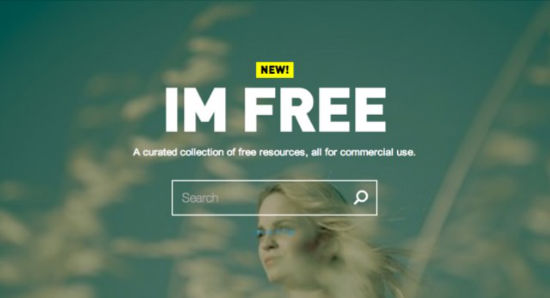
IM FREE: 3,000 Photos and Growing
It's only a few months ago, that we covered IM-Creator thoroughly here at Noupe. Then, a little while later, we published a roundup of websites made using homepage builders. IM-Creator got featured there, too, and was able to contribute a handful of examples.
If you think about what IM-Creator just did, it is almost obvious, at least not far to seek. They curated collections by topics of different interests, yet concentrating on the most widely needed in web design. At the time of this writing, the collections contain around 3,000 photos.
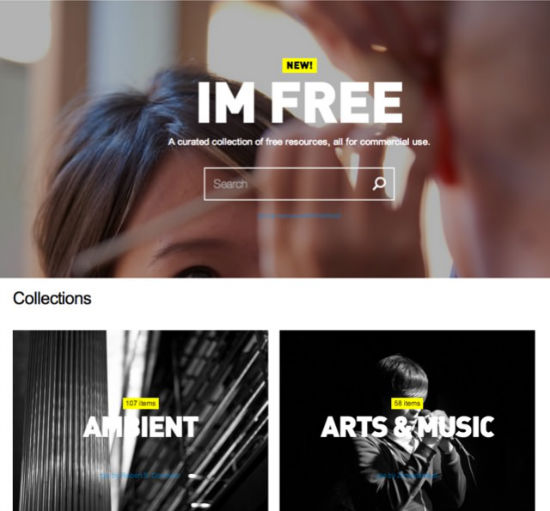
IM FREE does not host the images itself. Instead it provides the user with a gateway to Flickr. This makes sure, that the photos are downloaded directly from the accounts of the participating photographers, which in itself makes sure, that chnges in licensing will never fall through the grids. Another advantage is, that all of Flickr's different resolutions are available at your finger tips.
IM FREE: How To Use It
But, let's start from the beginning. After having opened IM FREE in a browser of your choice, you'll see an overview of the different available collections. These collections vary widely in the amounts of images contained. While some only carry two handful of photos, others are so vastly populated, that they even contain collections inside the collections. Having opened a collection, photo previews are arranged in a grid, much like what you are accustomed to from Pinterest. Clicking a preview opens the detail view.
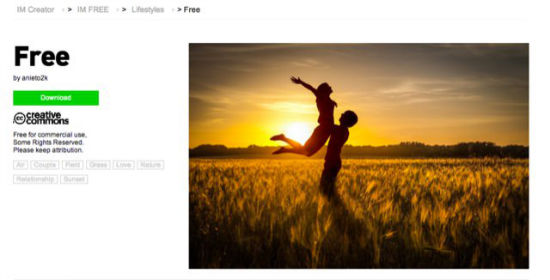
From here you can check the license, see the photo in more detail and get to know who the photographer is. Below the photo IM FREE suggests thematically resembling images. Clicking the button "Download" or clicking the photo itself brings you directly to Flickr, where you are enabled to choose freely from all the available resolutions. Don't forget to recheck the license terms while you're there.
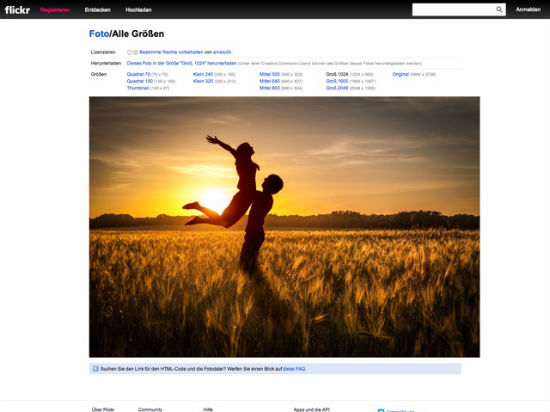
Besides strolling through the collections by topic, you are also able to search by keyword from the homepage and all other overview pages. The search functions based on editorial keywords, which in my tests proved to have been attached thoroughly and sensibly. From the search results grid click a preview and find yourself at the detail page described above.
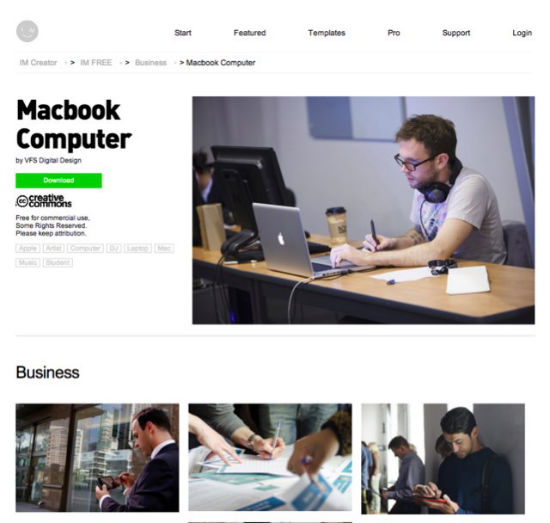
IM FREE: Compulsory Bookmark for Every Designer Out There
Regular readers surely remember the loads of free services we introduced you to during the last few years. Besides Pixabay none of them impresses me as much as IM FREE does. The reason is simple. IM FREE offers images, you actually NEED in your daily design practice, while others also offer nice pictures, yet, having a project that fits them is a game of chance, at least in most cases. IM FREE serves the more generic needs, where you want to show a notebook, a smartphone, a hand, a group of people collaborating and the likes. Basically, IM FREE offers similar material to what Shutterstock offers. How often have you thought you had found a great photo in one of the free services, just to find out, that the first row of search results actually was a Shutterstock advertised area? This happens to me frequently...
IM FREE will be one of my two first choices when it comes to photos from now on. How about you?
Related Links
- IM FREE | Landing Page
- IM-Creator | Homepage
- There We Go: 25+ Incredible Sites Created Using Website Builders | Noupe Design Magazine
- IM-Creator: Free HTML5 Homepage Builder for John Q. Public | Noupe Design Magazine

Superb :)
Great resources. I usually use SXC for license free photos but they are very limited. IstockPhoto and Dreamstime can be pricey if you are working with clients with small budgets. Knowing that you cant just pull off photos online as a designer and avoiding lawsuits in the long-run is an important thing, regardless how big the internet is.
Wow there are great things on the web still that we don’t know about, this is great thanks for the free photos resource.
THANK YOU!! This is so resourceful as I execute a new blog. Thank you so much for this, one step closer to being free :)
I have a question: How do you realistically use images with an attribution license in the commercial world? If I want to use images on a bog, it’s easy to put a link to the author. But what if I want to use the image in a brochure? It seems to me that it is unrealistic to put an image credit in a commercial brochure. Am I misunderstanding the attribution license? How do others do it? Your comments are appreciated.
Why should you not be able to attribute in print? Just because there’s no clickable link?
Yes, Dieter. If I understand correctly, you are supposed to provide a link to the photographer’s profile. According to Creative Commons, you are also supposed to provide a link to the license.
“Attribution — You must give appropriate credit, provide a link to the license, and indicate if changes were made. You may do so in any reasonable manner, but not in any way that suggests the licensor endorses you or your use.” (From Creative Commons)
It’s easy enough to provide discreet links with internet uses, but including full URLs while still trying to look professional seems a bit cumbersome in print. For this reason I have stayed away from using attribution-licensed pieces. But IM FREE is just too tempting! There is great work I’d love to use but I don’t know how to attribute the work without having to include ugly URLs. I hope that makes sense. Thoughts?
I use CC images quite frequently in print. On multi-page products I attribute inside the imprint or if not available on one of the last pages. On large posters I attribute at the right bottom of the product in reasonably small letters of course. Up to now nobody has me called me unprofessional for doing so…
Thanks for the insight, Dieter. I just wasn’t familiar with what would be considered “best practice” and therefore I was insecure about including URLs in print. Thanks!
Thanks, Great stuff!
You can use a URL shortener like bit.ly for the attribution link – you then print name & short link. That way it may actually fit under or on an image :).